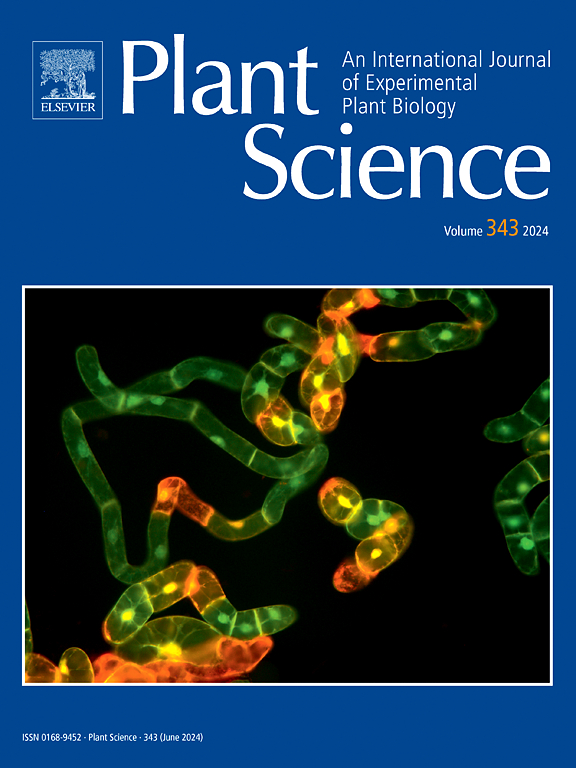Mutation in FvPAL2 leads to light red strawberry fruits and yellow-green petioles
IF 4.2
2区 生物学
Q2 BIOCHEMISTRY & MOLECULAR BIOLOGY
引用次数: 0
Abstract
In recent years, light red or white strawberries have attracted much attention because of their unusual color, however, the mechanism of strawberry color formation, especially light red strawberry color, is not well understood. By EMS mutagenesis of woodland strawberry (Fragaria vesca), we identified two mutants, rg40 and rg120, with light red fruit and yellow-green petiole, and allelic hybridization and BSA mixed-pool sequencing revealed that the phenotype was caused by mutation in the FvPAL2 protein in the anthocyanin synthesis pathway. Enzyme activity experiments showed that the mutant FvPAL2 protein barely catalyzed the substrate conversion normally, thus blocking anthocyanin synthesis, which in turn led to a decrease in anthocyanin accumulation in fruits and petioles. Analysis of the active pockets of the wild-type and mutant FvPAL2 proteins revealed that the mutant FvPAL2 could not bind to the substrate properly. The specific transcription factors FvMYB10 and FvMYB10L were further found to bind and activate the expression of FvPAL1 and FvPAL2 in both fruit and petiole. The discovery of the key site of FvPAL2 protein activity provides a clear modification target for the breeding of light red strawberry varieties, which has important application value.
FvPAL2突变导致草莓果实呈淡红色,叶柄呈黄绿色。
近年来,浅红色或白色草莓因其不同寻常的颜色而备受关注,然而,草莓颜色的形成机制,特别是浅红色草莓颜色的形成机制尚不清楚。通过对草莓(Fragaria vesca)的EMS诱变,鉴定出果实呈淡红色、叶柄呈黄绿色的两个突变体rg40和rg120,等位基因杂交和BSA混合池测序结果表明,该表型是由花青素合成途径中FvPAL2蛋白突变引起的。酶活性实验表明,突变体FvPAL2蛋白几乎不能正常催化底物转化,从而阻断了花青素的合成,从而导致果实和叶柄中花青素积累减少。对野生型和突变型FvPAL2蛋白活性口袋的分析表明,突变型FvPAL2不能正常结合底物。进一步发现特异性转录因子FvMYB10和FvMYB10L结合并激活果实和叶柄中FvPAL1和FvPAL2的表达。FvPAL2蛋白活性关键位点的发现,为浅红色草莓品种的选育提供了明确的修饰靶点,具有重要的应用价值。
本文章由计算机程序翻译,如有差异,请以英文原文为准。
求助全文
约1分钟内获得全文
求助全文
来源期刊

Plant Science
生物-生化与分子生物学
CiteScore
9.10
自引率
1.90%
发文量
322
审稿时长
33 days
期刊介绍:
Plant Science will publish in the minimum of time, research manuscripts as well as commissioned reviews and commentaries recommended by its referees in all areas of experimental plant biology with emphasis in the broad areas of genomics, proteomics, biochemistry (including enzymology), physiology, cell biology, development, genetics, functional plant breeding, systems biology and the interaction of plants with the environment.
Manuscripts for full consideration should be written concisely and essentially as a final report. The main criterion for publication is that the manuscript must contain original and significant insights that lead to a better understanding of fundamental plant biology. Papers centering on plant cell culture should be of interest to a wide audience and methods employed result in a substantial improvement over existing established techniques and approaches. Methods papers are welcome only when the technique(s) described is novel or provides a major advancement of established protocols.
 求助内容:
求助内容: 应助结果提醒方式:
应助结果提醒方式:


